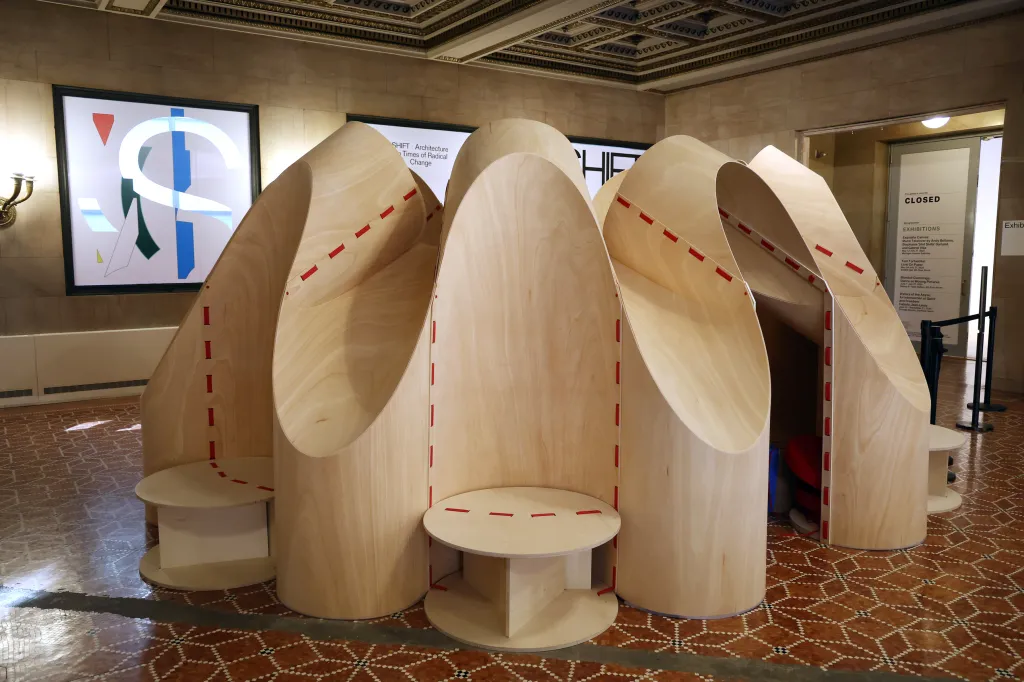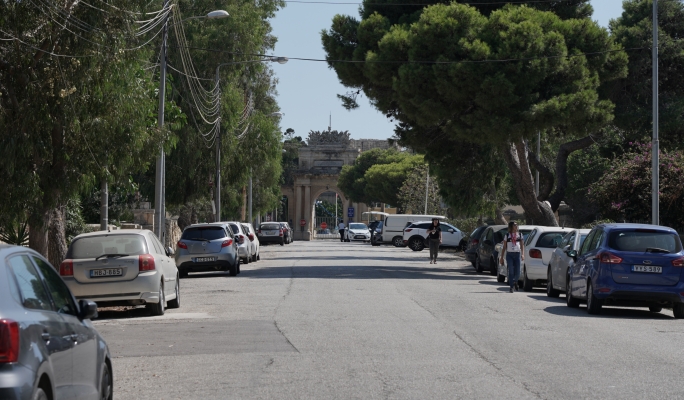
Chicago architect and urban planner Daniel Burnham’s exhortation to “make no little plans; they have no magic to stir men’s blood” continues to motivate the cultural, educational and commercial communities of Chicago. It also inspires the city’s contributions to architecture and design and drives the direction of the sixth edition of the Chicago Architecture Biennial.
Beginning this weekend and continuing through Feb. 28, 2026, the CAB, considered the largest architecture and design exhibition in North America, will celebrate the nonprofit’s 10th anniversary by presenting the work of more than 100 architects, designers and artists representing more than 30 countries.
“It’s a cultural event with broad appeal, open to everyone, and an invitation to experience architecture, whether you’re a student, a practitioner, a visitor or someone thinking about our built environment for the first time,” said Jennifer Armetta, the biennial’s executive director and owner and director of the ENGAGE Projects gallery.
Like a world’s fair in miniature, the CAB brings the world to Chicago for five months of conversation and creative exploration in architecture, design, public art, urban development, spoken word and the performing arts. The Chicago Cultural Center is the main hub of activity, with partners such as the Griffin Museum of Science and Industry, the Graham Foundation and the Stony Island Arts Bank opening their doors as exhibition venues. In total, 20 exhibition sites and about four dozen partners are contributing to the programming.
With the sixth edition’s theme, “SHIFT: Architecture in Times of Radical Change,” over 100 exhibitions, tours, films, public discussions, tours, art displays, print and digital publications, and other public activities throughout the city and suburbs intend to stimulate dialogue on the impact of political, environmental, social and technological changes on the built environment.
“It’s fantastic to have the biennial in Chicago,” said artistic director Florencia Rodriguez, “because Chicago has always been a laboratory for the future.”
Rodriguez is no stranger to the biennial. The native Argentinian and, since 2022, director and associate professor of the School of Architecture at the University of Illinois at Chicago, attended the first three editions. She was thinking about the sixth edition even before the biennial approached her to be artistic director. “Being an editor, publisher and a curator, I was really aspiring to have a voice in a global exhibition such as this one,” she said.
Rodriguez said the theme of “shift” was driven by the desire “to engage with reality and respond to the many issues happening politically and environmentally — even how we experience our everyday lives, with media and technology.”
“It’s about generating a platform that brings different positions and different ideas and modes of practice together for a conversation,” she said. “You’ll hear me talk about the biennial being conversational. I believe in dialogue and not necessarily permanent consensus.”
And with the biennial being led by Rodriguez, Armetta and board co-chairs Nora Daley and Sarah Herda, “shift” is also an apt description of the increasing role women are playing in architecture and design, especially in a city whose architectural history has been largely dominated by men.
Putting together a multifaceted program like the Chicago Architecture Biennial can present challenges such as funding and international travel complications. While bringing global creators to Chicago turned out to be less of an issue than initially thought, Armetta said the group is managing costs in part by changing how they do things.
“For our 10th anniversary, the biennial itself is shifting,” she said. “We remain committed to supporting new ideas and innovations while also deepening our engagement with Chicago’s communities.” Plus, the biennial’s longtime donors “have been critical and helped inspire others to give.”
“I hope the event galvanizes our city,” Armetta said, “and that we can tweak the curiosity of children who come through this exhibit so that they might become inspired.”
After all, Rodriguez said, “architecture is for everyone.”
From a calendar of dozens of events and exhibitions, we picked a few worth checking out:
“Water Music on the Beach”
Perhaps the most striking example of the biennial’s interdisciplinary emphasis will be a Field Harp performance followed by a procession to the beach in the Edgewater neighborhood. Led by artist and educator Firat Erdim, Field Harp is an ensemble that plays single-string, electric, wind-activated harps. “Part of the spirit of SHIFT is understanding that the atmosphere, air, humidity, are also part of the substance of architecture,” Rodriguez explained. “Artifacts like the field harps that react to the environment are a way to lead us there.”
1-4 p.m. Sept. 28 at 6018 N. Kenmore Ave.; register at 6018north.org
“Concéntrico: Ten Years Reflecting on the City Through Contemporary Practices”
Learn from Javier Peña Ibáñez, founder and director of the international architecture and design festival Concéntrico about its evolution from the Logroño International Festival of Architecture and Design in 2015 — and its more than 150 interventions in the past decade — to its plans to enrich, expand and further enliven the Concéntrico experience. (Peña Ibáñez also will speak at an Oct. 1 opening reception for Concéntrico at Instituto Cervantes of Chicago).
5:30 p.m. Sept. 29 at University of Illinois Chicago School of Architecture, 845 W. Harrison St.; register at mascontext.com
“Yasmine Spiro: Cornerstone”
Yes, you can dance about architecture. An exhibit rooted in the landscape and built environment of Jamaica, “Cornerstone” by Yasmin Spiro explores the relationship between land, architecture, memory and the body. An Oct. 9 live performance in collaboration with Jamaican choreographer Neila Ebanks will articulate and extend the exhibition’s themes through movement, sound and sculptural form. The exhibit runs through Nov. 2.
6 p.m. Oct. 9 at Hyde Park Art Center, 5020 S. Cornell Ave.; register at hydeparkart.org
“The Prize is the Beginning”
Presented by the Chicago Architecture Center in collaboration with the Mies Crown Hall Americas Prize, a program of the College of Architecture at the Illinois Institute of Technology, “The Prize is the Beginning” seeks to stimulate greater appreciation for the diversity and dynamism of North, Central and South American architecture by showcasing the contemporary architecture recognized by the juried biennial Americas Prize and Emerge awards.
Through Oct. 26 at Chicago Architecture Center in One Illinois Center, 111 E. Wacker Drive; $15 admission, more at architecture.org
“Eyes on the Future: Evolving Hotel Design at Populus”
Take a virtual trip to Denver via Studio Gang by learning about the design of Populus, the studio’s recent hotel project in that city’s downtown. It’s an example of how contemporary hotels can connect more closely with their community and environment. See architectural models of Populus, drawings and material samples. The founding partner of Studio Gang is Jeanne Gang, an award-winning architect and MacArthur Fellow.
4-6 p.m. Wednesdays and select Fridays through Feb. 28 at Studio Gang, 1520 W. Division St.; more at chicagoarchitecturebiennial.org
“SHIFT: Traces”
Located on the North Lawn of the Griffin Museum of Science and Industry, “Traces” is an installation of 10,000 dry-stacked bricks created by the architectural firms of Balsa Crosetto Piazzi and Giorgis Ortiz. It pays tribute to the 1893 World’s Columbian Exposition by literally tracing the footprint of the World’s Fair buildings that once stood in that space. The installation’s demonstration of “mass without permanence” is a nod to the impermanence of all but two of the original World’s Fair buildings, with one being the museum itself.
Through Feb. 28 at Griffin Museum of Science and Industry, 5700 S. DuSable Lake Shore Drive; more at chicagoarchitecturebiennial.org
“SHIFT: Architecture in Times of Radical Change”
Throughout the biennial, visitors can go to the Chicago Cultural Center, the central hub of activity, to learn about the purpose and philosophy behind CAB-6 through the creative work of several architecture and design firms worldwide. Two additional global collaborations on display in the Cultural Center are “Inhabit, Outhabit,” which explores how architecture shapes modes of dwelling in times of displacement and transformation, and “The Ordinary-EXTRA,” where imagination, layering and texture come together to uncover the remarkableness in everyday spaces.
Through Feb. 28 at Chicago Cultural Center, 78 E. Washington St. All Biennial-sponsored events are free and open to the public, though some require registration, some are sold out, and some partner events have fees; more at chicagoarchitecturebiennial.org
Robert Marovich is a freelance writer.



